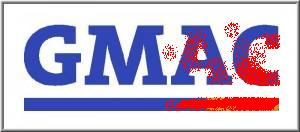
GMAC was unable to raise the capital needed from the still ailing private markets, so our Treasury became the lender of last resort.
The U.S. Department of the Treasury announced this afternoon that it is providing an additional $3.8 billion in capital from taxpayers to GMAC to keep it solvent.
Treasury under its financial health check assessment, the so-called Supervisory Capital Assessment Program (SCAP), said last May that additional capital of $5.6 billion would be needed for tottering GMAC, which was suffering from bad loans and collapsed residual values for leases of General Motors vehicles, as well as failed loans in the collapsed real estate markets.
GMAC now has the capital buffer required under SCAP, which is needed to meet the worse-than-expected economic scenario after the economic stimulus program proved ineffective at turning the economy around. The $3.79 billion cash infusion was less than the $5.6 billion originally anticipated by the Federal Reserve due in large part to lower-than-expected losses from the General Motors bankruptcy filing.
In November, GMAC announced that its head had departed and a new CEO, Michael A. Carpenter, was coming in from the financial services industry and taxpayer subsidized Citigroup. The appointment of Carpenter, with disputed accounts of whether the previous CEO, Alvaro de Molina, was fired or had resigned, raised questions about the reckless practices of Wall Street, which is responsible for the ongoing Great Recession and the collapse of the global banking system.
The Obama Administration has thus far been unable to implement any reforms whatsoever in financial regulation more than one year after the collapse of the Lehman brothers or AIG, among others, in the fall of 2008.
GMAC was unable to raise the capital required in the still ailing private markets, so Treasury became the lender of last resort. GMAC provides wholesale and retail financing to General Motors and Chrysler. If GMAC were allowed to fail, it would likely result in the collapse of GM and Chrysler, which have emerged from bankruptcy earlier this year because of billions dollars of taxpayer funds. The ongoing GMAC subsidies could put Ford Motor Credit at a disadvantage if it has to raise money privately at higher rates, which means Ford dealers and customers would be charged more for financing than competing Chrysler and GM dealers and customers.
The additional funding appears to keep GMAC afloat and prevent its own bankruptcy at a time when the economy continues to flounder and unemployment keeps rising. GMAC is also taking additional steps to clean up its balance sheet by writing off billions more in bad housing loans. Whether the company can survive and return to profitability remains to be proven.
As part of the additional funds, Treasury restructured its investment in GMAC today “to protect taxpayers and put GMAC in a position to raise private capital and pay back taxpayers as soon as practicable.” As a result, U.S. taxpayers now own 56% of GMAC’s common equity, and $2.7 billion in 8% coupon trust preferred securities, and $11.4 billion in 9% coupon mandatory convertible preferred stock.
GMAC’s remaining common equity holdings following the restructuring are:
- Cerberus and its affiliates hold approximately 14.9%,
- third party investors hold approximately 12.2%,
- a trust managed by an independent trustee for the benefit of General Motors holds approximately 9.9%,
- and an affiliate of General Motors LLC holds approximately 6.7%.
Taxpayers are at risk here given their already large, 60% holding of GM, which lost $1.2 billion in its latest quarter, and now a majority interest in GMAC.
GMAC is a bank holding company with 15 million customers worldwide. As a global, financial services institution, GMAC’s business operations include automotive finance, mortgage operations, insurance, commercial finance and online banking. As of Sept. 30, 2009, the company had approximately $178 billion in assets.
The question remains for taxpayers, will we be paid back?

And when will Ford Credit’s industrial bank application be approved in Washington so it can compete with Ally Bank (aka GMAC)?
A more than fair point.The bank status of GMAC allowed the government to channel TARP funds into GMAC and its subsidiaries. Ford claims not to need government money, which is true since it is solvent, but heavily in debt. Ford has accepted billions from the government to retool its plants, though.
According to GMAC:
The following actions have been taken to strengthen Ally Bank and to further establish its strategic role within GMAC.
• In order to strengthen the asset quality profile of Ally Bank, GMAC purchased certain higher risk mortgage assets from Ally Bank at fair value of approximately $1.4 billion, resulting in an estimated pre-tax charge of approximately $1.3 billion. In addition, GMAC contributed $1.3 billion of additional cash capital to Ally Bank, equal to the amount of the pre-tax charge, to maintain Ally Bank’s capital position. At Sept. 30, 2009, the assets had an unpaid principal balance of $3.6 billion and a carrying value (net of allowances for credit losses) of $2.8 billion.
• Subsequently, these mortgage assets were contributed by GMAC to ResCap where they are classified as HFS.
Following these actions, Ally Bank remains in compliance with its regulatory agreements and has the necessary capital to support its auto financial services business, which is the company’s highest strategic priority. The Federal Deposit Insurance Corporation, Ally Bank’s regulator, was consulted regarding the actions.
The political vitriol in this piece is so expertly wrapped around figures that it almost appears as fact. Good job and shame on you. Good reporting clarifies using actual facts and doesn’t resort to obfuscation.
Brian: You will have to be more specific. What obfuscation? This is certainly a complex subject, and we welcome discussion.
What “actual facts” (as opposed to what false facts?) have we overlooked or under weighted in the analysis? Anyway, thanks for the, backhanded, complement.